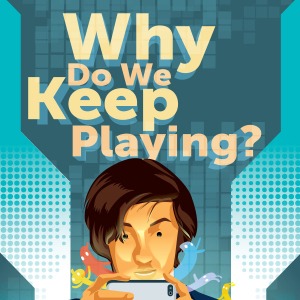Why Do We Keep Playing? The Science Behind Mobile Gaming Addiction
What’s not to love about mobile games? They’re easy, fun and sometimes free (at first, anyway). But the same traits that make them lovable can also cause addiction.
The Mobile Gaming Industry
$7.8 billion
Total revenue for mobile gaming industry in 2012(1)
$12.6 billion
Projected mobile gaming revenue in 2016 (1)
909 million
Number of mobile gamers worldwide in 2013 (1)
0.15% of mobile gamers bring in 50% of the market’s revenue. (2)
What does this mean?
Hardcore players of mobile games are spending the most money to buy in-app add-ons. The majority of mobile gamers are casual players who spend a lot less inside of a game.
Top grossing iOS gaming apps (1)
Game: Daily revenue
Clash of Clans: $1.2 million
Candy Crush Saga: $966,265
Kim Kardashian: Hollywood: $625,296
Game of War – Fire Age: $296,406
Slotomania: $233,917
Farm Heroes Saga: $196,236
Hay Day: $164,520
Candy Crush
Let’s take a look at the perfect example of a successful, addictive mobile game. (3,4)
93 million
Average daily active Candy Crush users
78%
Percentage of parent company’s revenue made by Candy Crush alone
Why do we love it so much?
Why are our brains hardwired to get sucked into games like Candy Crush? What makes them so appealing? (5)
1. You have to wait. It’s like being put in timeout, waiting for your lives to fill up again. And the longer you have to wait, the more your craving builds.
2. We love positive reinforcement. It’s hard not to feel accomplished when that deep voice says “Sweet!” after you clear a whole row of candy.
3. It’s a one-hand game. It’s not like a console game that requires all of your attention; it’s easy to hold your phone in one hand and play, and do something else with the other. How convenient!
4. It never ends. The game’s developers are always making new levels, so you’ll probably never actually beat the game. You can always come back for more.
5. It’s technically free, but paying for add-ons is easy. Just a few clicks and that extra life or power-up is yours.
6. Kids love candy. There’s something to be said about the bright colors and animated treats; it taps into our inner child.
7. It’s social. People feel a sense of pride when they finish a hard level. The game allows you to immediately share that with your friends via social media.
Addiction and the Brain
A mobile game habit isn’t as physically dangerous as an addiction as heroin or meth, but your brain acts much the same way when it goes without. (6)
- Addictions target the brain’s reward system and flood it with dopamine. When we play, we feel happy.
- Since playing is now associated with reward, our brains remember this action as something necessary to repeat in the future.
- Over time, a person can produce less and less dopamine with the activity, so the brain craves more time spent with the addiction.
- Because of the lower dopamine levels when not playing, withdrawal symptoms set in, including depression, restlessness, difficulty focusing, mood swings, and nausea.
Sources:
1. http://www.statista.com
2. http://www.forbes.com
3. http://mashable.com
4. http://www.sec.gov
5. http://business.time.com
6. http://www.drugabuse.gov


